Breed Overview
Do you like dogs but dislike the fact that they shed so much hair, or are you just allergic to the stuff? Then maybe you might consider getting a hairless dog. Artists and other free-spirited individuals have long had a soft spot for these rare and beautiful breeds.
You won’t have to spend any time at all brushing or vacuuming a hairless dog, but that doesn’t mean they’re completely low-maintenance. Keeping bare skin healthy necessitates the use of protective measures, including sunscreen, outerwear, and frequent bathing.
Keep in mind that most individuals who are allergic to dogs are actually allergic to the dog’s dander and saliva, not its hair or fur, so getting a hairless dog might not be the answer to your allergy woes.
The top 10 hairless dog breeds are shown below.
Abyssinian Sand Terrier (African hairless dog)
The Abyssinian sand terrier is the perfect dog for those who want a low-key workout partner. Another name for the African hairless dog describes this incredibly rare breed. It is a small to medium-sized dog with a lean, long build.
Even among members of the same breed, some canines are born completely hairless, while others have only a few hairs on their heads and tails.

Image Credit- Getty Images
American hairless terrier
The American hairless terrier is a descendant of the rat terrier. Selective breeding for hairlessness in rat terriers began in the 1970s. Some American hairless terriers still have a light coat at birth, but this is rare.
These canines are known for their intelligence, energy, and enthusiasm. They have a high hunting drive for small rodents and are otherwise well-suited to life as family pets.
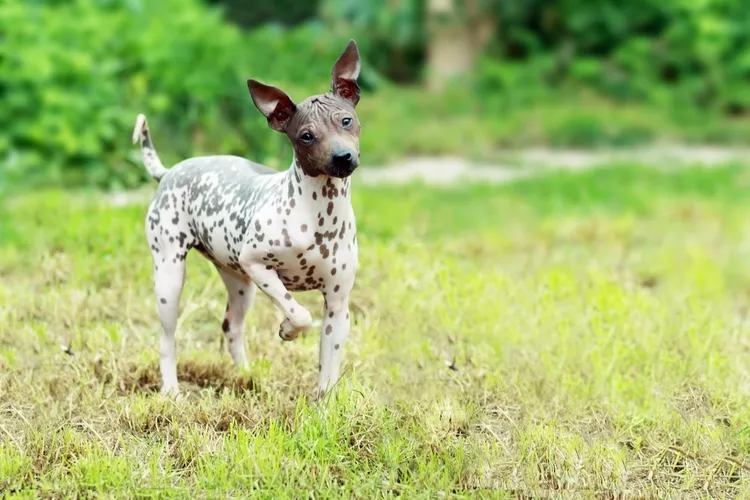
Image Credit- Getty Images
Argentine Pila Dog
This mystery hairless toy breed is nearly rare to find in the United States but is a common pet in South America, so there is still much we don’t know about them. These canines are nearly hairless, with just a little beard and no whiskers.
The hairless skin of an Argentine Pila makes them a high-maintenance pet, despite their reputation as a playful and companion dog.

Image Credit- Getty Images
Chinese Crested
The Chinese crested dogs have the best of all worlds regarding hair, with fluffy wisps on its head and feet but no hair anywhere else on its body.
The American Kennel Club (AKC) has designated these lovable canines as “ultra-affectionate companion dogs” because of their constant need to be at their owners’ sides.
Keeping this Chinese dog breed safely from sunburn and other skin irritations is as simple as applying a daily coat of breed-specific dog sunscreen and topicals.
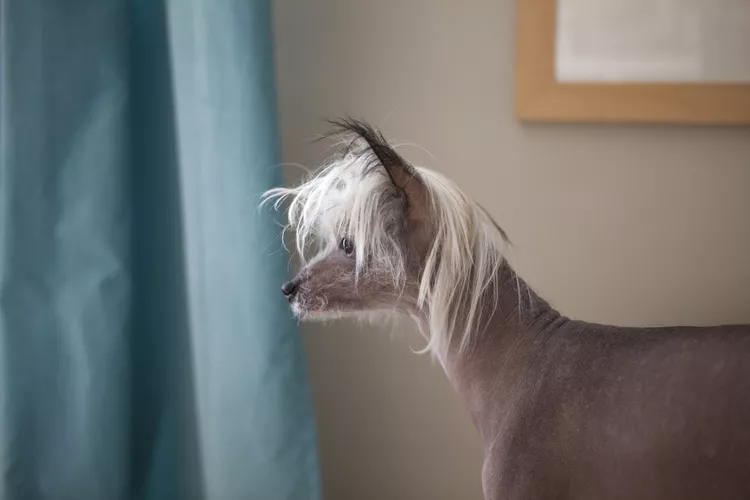
Image Credit- Getty Images
Ecuadorian Hairless Dog
As its name implies, the Ecuadorian Hairless dog is a hairless breed with roots on Ecuador’s Santa Elena Peninsula. The Ecuadorian hairless dog is still one of the rarest and most distinct canine species.
They can achieve a maximum height of 18 inches while having very little hair. In most cases, the only visible fur is a tiny patch at the top of the head. The lack of premolar teeth is just one more thing that sets this hairless dog apart from the rest.
Commonly, canines have 16 of these teeth. The Peruvian Hairless is the ancestor of the Ecuadorian Hairless, and vice versa. This makes perfect sense, given the proximity of the two countries and the similarities between them.

Image Credit- Getty Images
Hairless Chihuahua
A rare genetic abnormality renders some Chihuahuas bald, but otherwise, they are the same breed as normal Chihuahuas. As a result, their demeanour is the same as that of any other chihuahua.
They tend to have big characters, form strong attachments to their favourite humans, and be fiercely territorial over their homes.
However, the hairless variety is more prone to skin problems and requires special care and close monitoring. Like humans, hairless chihuahuas are susceptible to the cold.
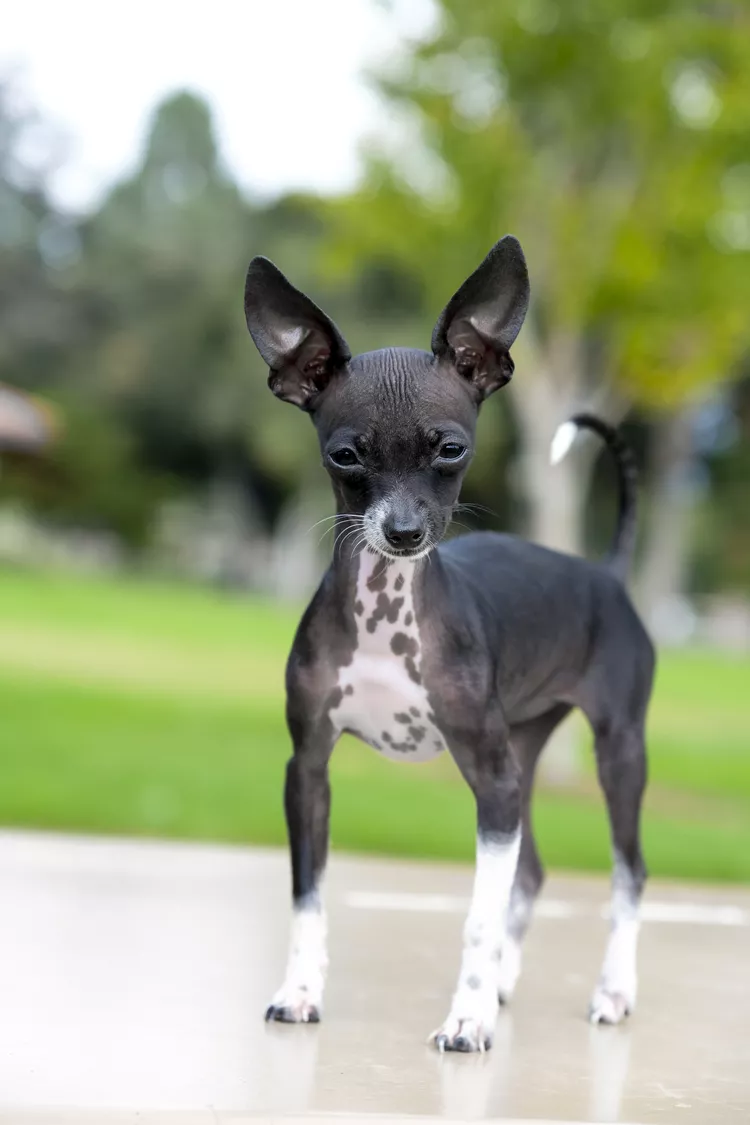
Image Credit- Getty Images
Hairless Khala
This rare hairless dog breed is found only in Bolivia; the Hairless Khala is also known as the Bolivian hairless dog. They likely have common ancestry with the Xoloitzcuintli, with whom they have a striking resemblance.
Training is essential if you want your dog to be social outside the home while still loving and protecting his human family. Some of these dogs, particularly their heads, contain little tufts of hair, just like other “hairless” breeds.

Image Credit- Getty Images
Jonangi Dog
These Indian bald dogs were previously commonplace for their usefulness in herding and hunting, but they are now nearly extinct in their native country.
While mostly quiet, these dogs have a peculiar yodel-like bark when they do speak out. Jonangis aren’t completely bald, but their short coats were developed to survive the scorching heat of India’s summers. There’s a common belief that they’re incredibly pleasant and straightforward to train.

Image Credit- Getty Images
Peruvian Inca Orchid
The Peruvian Inca Orchid, or Peruvian Hairless, is a breed of dog that was commonly kept as a pet in ancient Peru. They experience separation anxiety when left alone since they are so attached to and protective of their human families.
In addition, a Peruvian hairless dog is a tiny active dog that requires a lot of playtime to tyre out. Some Peruvian Inca Orchids may have very short patches of fur on their head, paws, and tail tip, although this is the exception rather than the rule.
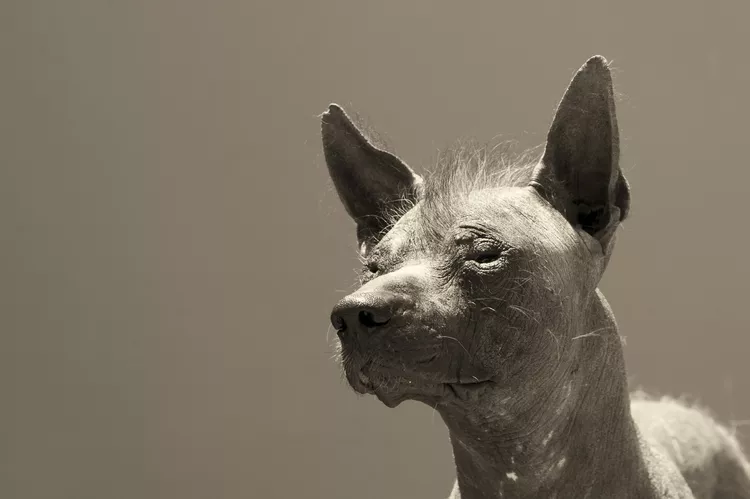
Image Credit- Getty Images
Xoloitzcuintli/ Mexican Hairless Dog
The Xoloitzcuintli is a hairless dog that the American Kennel Club also recognizes. They are classified among the non-sporting dogs. Ancient Mexico has been home to these dog breeds for over 3,500 years.
These hairless, cool toy dogs are thought of as the ancient Aztec dog of the gods. They were used as pets and guard dogs by the ancient Aztecs. The Xoloitzcuintli is available in both a hairless and a coated variety. The hairless dog, however, has become a symbol in its own right and is far more well-known.
The Mexican Hairless Dog also comes in three different sizes. These canines are available in various sizes: toy, miniature, and standard. The Xolo’s customization options notwithstanding, it will fit in with any family.
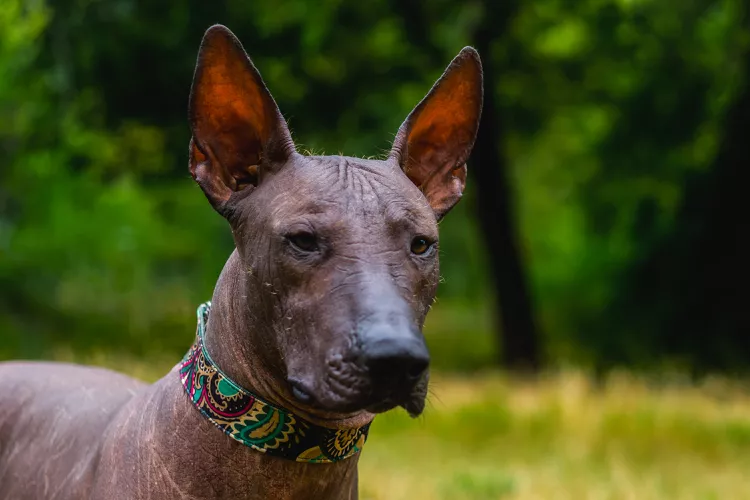
Image Credit- Getty Images
The Care Guide
A household may desire to adopt a hairless dog for various reasons. Most hairless breeds are affectionate and caring, making them great companions who will snuggle up at your feet even if you have allergies.
These dogs don’t require professional grooming or daily brushing, but they require frequent washes and nail clipping to maintain their bald coats.
Most hairless dog breeds require a coat in the winter and breed-specific dog sunscreen in the summer since they are especially vulnerable to temperature and weather extremes.
The Factors to Think About
- The lack of a coat of skin protection is the first issue that comes to the minds of most owners. You should know some things even if you don’t want to dress up your dog every day.
- Because of their “lack of protection,” hairless breeds are prone to developing various skin problems. They may, for example, break out in rashes, get sunburned easily, and even, in extremely rare situations, experience acne.
- They are poorly insulated since they have hardly any fur. That is to say; hairless dog breeds require protection from both cold and heat. They can’t survive in the hot sun for too long but will perish in frigid climes.
- The benefits of having a hairless dog outweigh the drawbacks (figuratively and literally). It’s probably safe to assume that grooming is the primary focus of any additional care or attention.
FAQS
How Many Hairless Breeds Are There?
At present, we know of at least ten different hairless dog breeds. While you may be familiar with only a few of these breeds, you should know that each one has wonderful qualities and would make a wonderful companion.
What Does a Hairless Dog Look Like?
Hairless dogs enjoy exposing a little skin, though how much skin they expose varies. A hairless dog can be either a completely hairless dog or a coated hairless dog. Some are completely bald, while others have a few stray hairs.
Completely hairless dogs and those with only hair on their heads, tails, or paws are all included in the hairless category. The hair on the skin of a coated dog is so short and fine that it is nearly invisible.
Do hairless breeds require grooming?
False beliefs persist about hairless dog breeds. It’s a common misconception that hairless dogs won’t require regular maintenance. While hypoallergenic dogs have an advantage in terms of comfort, they might present some unique challenges regarding grooming.
